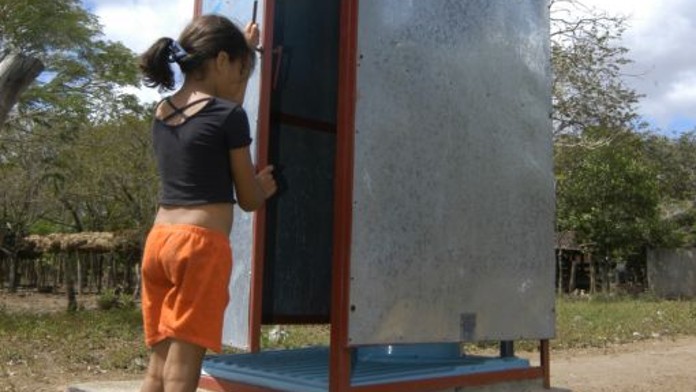News from 2017-11-18 / KfW Development Bank
Clean toilets benefit health
World Toilet Day: modern sanitary facilities help prevent diseases

This news usually makes people grin: 19 November is World Toilet Day. That may sound silly, but there is a serious story behind it. While flushing toilets in restrooms are a matter of course for Europeans and North Americans, this is not the case for the majority of the world. 2.5 billion people worldwide, about one third of the world's population, do not have access to clean toilet facilities. Millions of men and women in developing countries answer the call of nature in the open, next to trees, in bushes or in rivers. The consequences are polluted drinking water and infectious diseases.
The World Toilet Organization declared the first World Toilet Day back in 2001. Its founder, entrepreneur Jack Sim, says "a toilet is the most affordable preventive medicine". The United Nations agreed with this assessment due to the major role that clean sanitary facilities play in people's health: the UN General Assembly unanimously declared 19 November as World Toilet Day in 2013.
Without toilets, there’s no way of stopping faecal matter and urine from entering drinking water.
Without toilets, there’s no way of stopping faecal matter and urine from entering drinking water. Without toilets, there’s no stopping the inevitable spread of germs and thus often fatal diseases such as diarrhoea, cholera, typhus or worm infections. The World Health Organization estimates that around 1.5 million people die each year due to contaminated drinking water caused by a lack of clean sanitary facilities. Children are particularly affected. Diarrhoeal diseases caused by bad hygiene kill more children under the age of five than malaria, measles and HIV/AIDS combined.
The majority of those suffering from a lack of toilets are members of poor rural populations and people living in slums or illegal settlements in the world's quickly growing megacities. Women and girls suffer the most in situations like this. According to UN studies, many girls in African, Asian, or Latin American countries do not attend school when they are on their period and there are no sanitary toilets in the schools. According to the study, school attendance among girls would increase by 11% if there were sufficient sanitation facilities around the globe.
According to Sustainable Development Goal (SDG) 6, the international community aims to ensure the availability and sustainable management of drinking water and sanitation for all by 2030. KfW Development Bank has been working on this goal for a long time. With about 480 ongoing projects and programmes in the water sector, KfW currently achieves a financing volume of EUR 6.9 billion. As part of the wide range of projects — like wastewater treatment plants, sewage systems and sewage sludge disposal — toilets at markets, bus stations, in schools or hospitals and private households are also being financed. Some 190 million people worldwide benefit from these measures.

Share page
To share the content of this page with your network, click on one of the icons below.
Note on data protection: When you share content, your personal data is transferred to the selected network.
Data protection
Alternatively, you can also copy the short link: https://www.kfw-entwicklungsbank.de/s/enzBWrMC.BsNA
Copy link Link copied